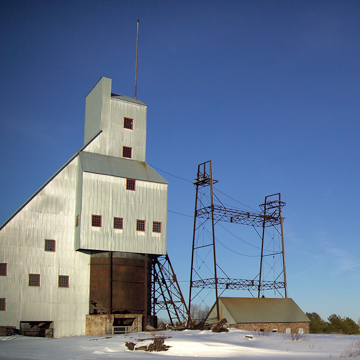The hoist house is a reinforced-concrete fireproof building with twenty load-bearing columns and a gabled roof. The red brick exterior veneer is broken with huge arched windows. The structure housed the mammoth Nordberg hoist, which was employed to reach the extreme inclined depth to which the Number Two shaft penetrated the rich Pewabic Lode. Measuring 60 × 54 × 60 feet, it is the largest steam-powered mine hoist ever manufactured; it could lift a 10-ton load of copper from a depth of 6,000 feet at the rate of 3,200 feet per minute. The attention paid to the architectural character of this purely utilitarian building says something about the aesthetic awareness, as well as the technical aggressiveness of the company.
You are here
Mine Shaft Number Two, Hoist House
If SAH Archipedia has been useful to you, please consider supporting it.
SAH Archipedia tells the story of the United States through its buildings, landscapes, and cities. This freely available resource empowers the public with authoritative knowledge that deepens their understanding and appreciation of the built environment. But the Society of Architectural Historians, which created SAH Archipedia with University of Virginia Press, needs your support to maintain the high-caliber research, writing, photography, cartography, editing, design, and programming that make SAH Archipedia a trusted online resource available to all who value the history of place, heritage tourism, and learning.













